A photographer visits the biggest ice and snow festival in the world to explore contemporary China.
Construction. If there’s one thing Wesley Thomas Wong will remember about living in China, it’s the amount of buildings and roads and bridges being constantly constructed. But somewhere in the vast forest of cranes and people, he found something that looked like another world: the Big Ice and Snow World festival in Harbin. For the past 15 years or so, the city has transformed itself for two months into a surreal ephemeral landscape of giant castles and sculptures, created like so much in China: hastily and in extreme conditions by local workers. And it was these laborers that Wong photographed nearly every winter for five years, with admiration and curiosity. In “The Ice Man Cometh,” the eery landscape becomes a blank slate, a metaphor for contemporary China. He joined R&K from his home in Hangzhou.
Roads & Kingdoms: How did this festival start?
Wesley Thomas Wong: Getting any kind of accurate information in China is very difficult. It’s been going on for about 15 years and it’s run by the city, but the actual guy who started it is still kind of a mystery. You would think the PR people would know who he was, but they said: “some guy started it and built it.” I’m sure it was like everything here in China, you know, to make money. Tourism is really exploding inside China. When I first came here about six years ago, I used to go to some of the sites and I was just blown away by the fact that I wasn’t seeing foreigners. If you go to any of the smaller cities, you see these really crazy things being built all the time. Most of these places are still caught in a time-warp. Everything is modernizing in the big cities and so the they’re trying to cash in on that whole thing.
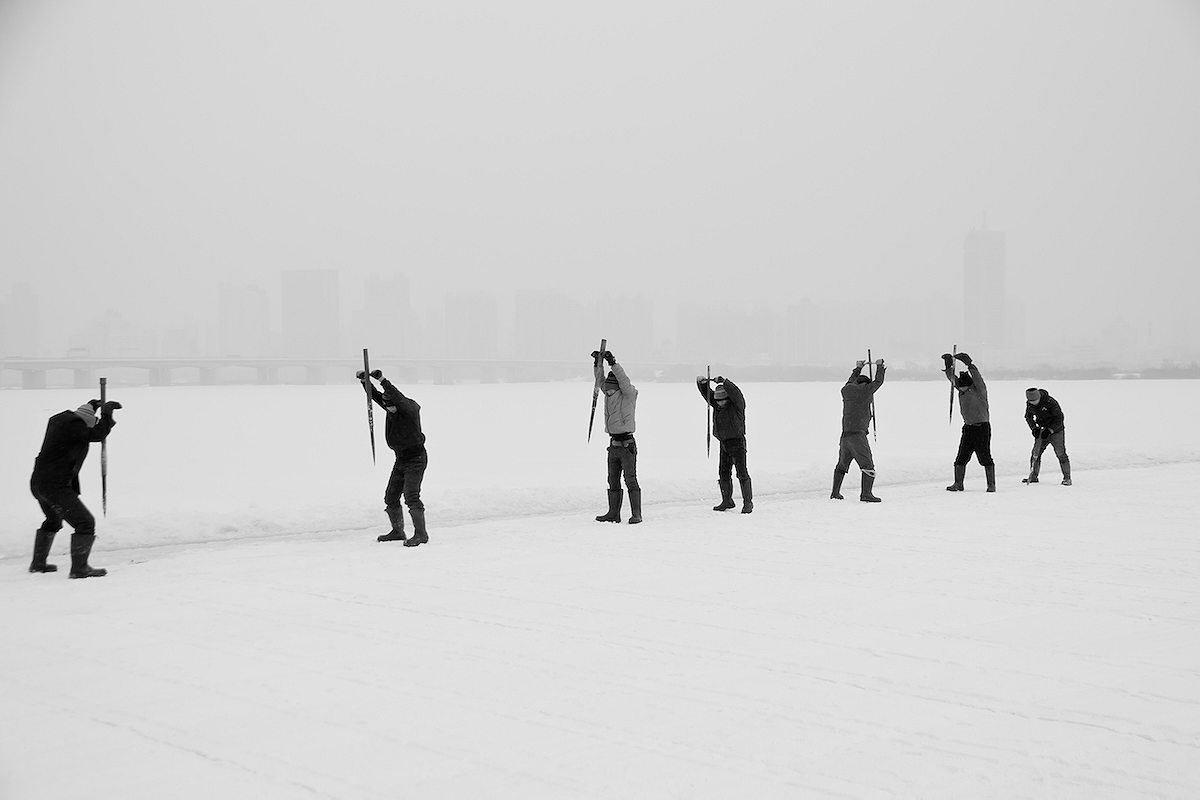
Roads & Kingdoms: What kind of a city is Harbin?
Wong: It’s the largest city in Heilongjiang province. It’s a heavily blue collar and industrial city. Car manufacturing was a big deal up there, heavy steel production, etc. The festival is a really big deal for the city. It adds a lot of money to the economy. I didn’t go up there because I was interested in ice festivals. I went because I was meeting my now-wife’s parents. So people told me, “oh you’re going to Harbin, why don’t you check out the ice festival?” I just kind of thought, “what’s that?” So I went online and saw images of the structures lit up at night and I thought, “woah, that’s pretty trippy.” I thought I’d check it out if I got the chance. After the little meeting with the in-laws went well, they said, “why don’t you take a walk downtown?” And that’s what I did. There’s a huge river down there which runs through the city, it’s called the Song Hua river and it’s probably about a mile and a half wide. It was completely frozen. I had never seen anything like that before. I went down there and I saw these guys working. They were bringing in the ice, putting up the scaffolding. It was minus thirty degrees weather and I just couldn’t believe it. They told me they had been working since sun up and they were going to stop at sun down, which is very Chinese. I was just frozen after two hours of walking outside.
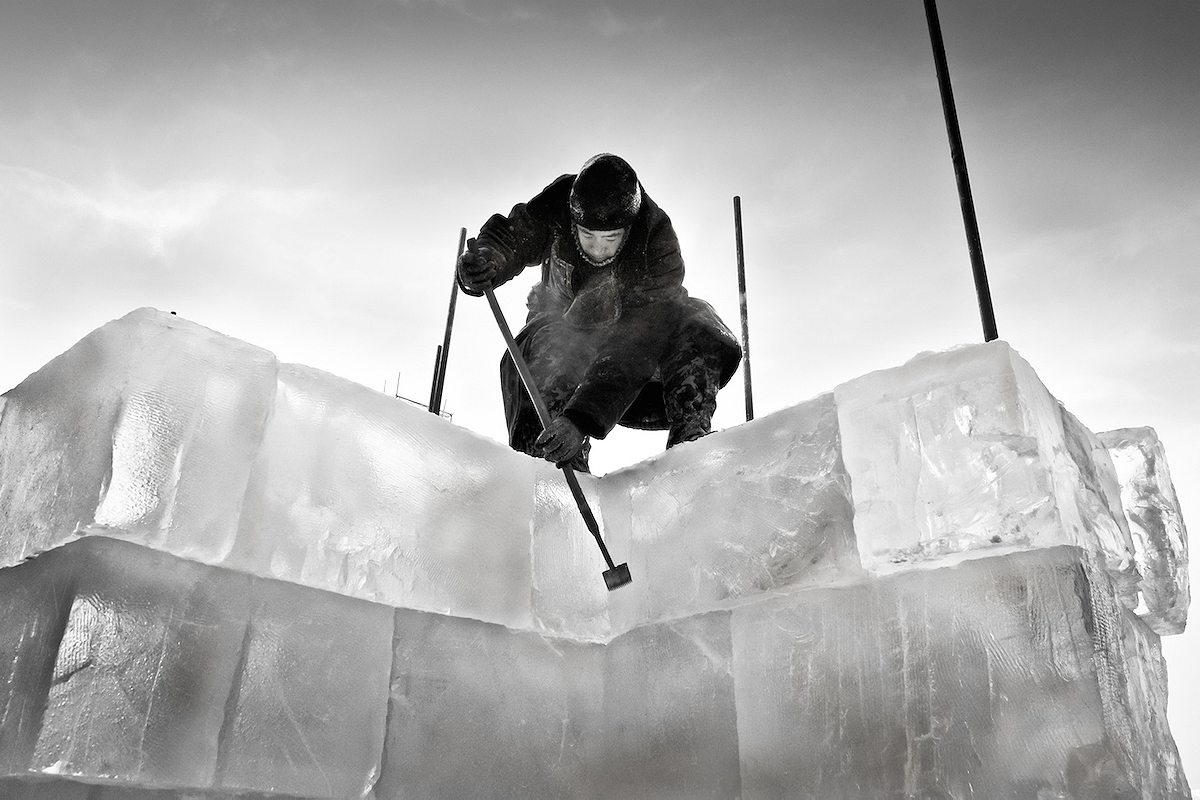
Roads & Kingdoms: How did you approach the workers?
Wong: It was hard really to talk with them at any length because these guys were on a mission when they were working. I only knew of one break that they took and that was to eat. So the conversations were pretty quick. These guys are the classic manual day labor construction workers of China. There’s construction everywhere you go in China, and I think that’s the big untold story. These people, people in the countryside, who are poor and uneducated, they’re not getting a piece of the pie that everyone is talking about. There’s a huge gap in wealth and it’s really a hierarchical “king and his peasants” kind of life here.
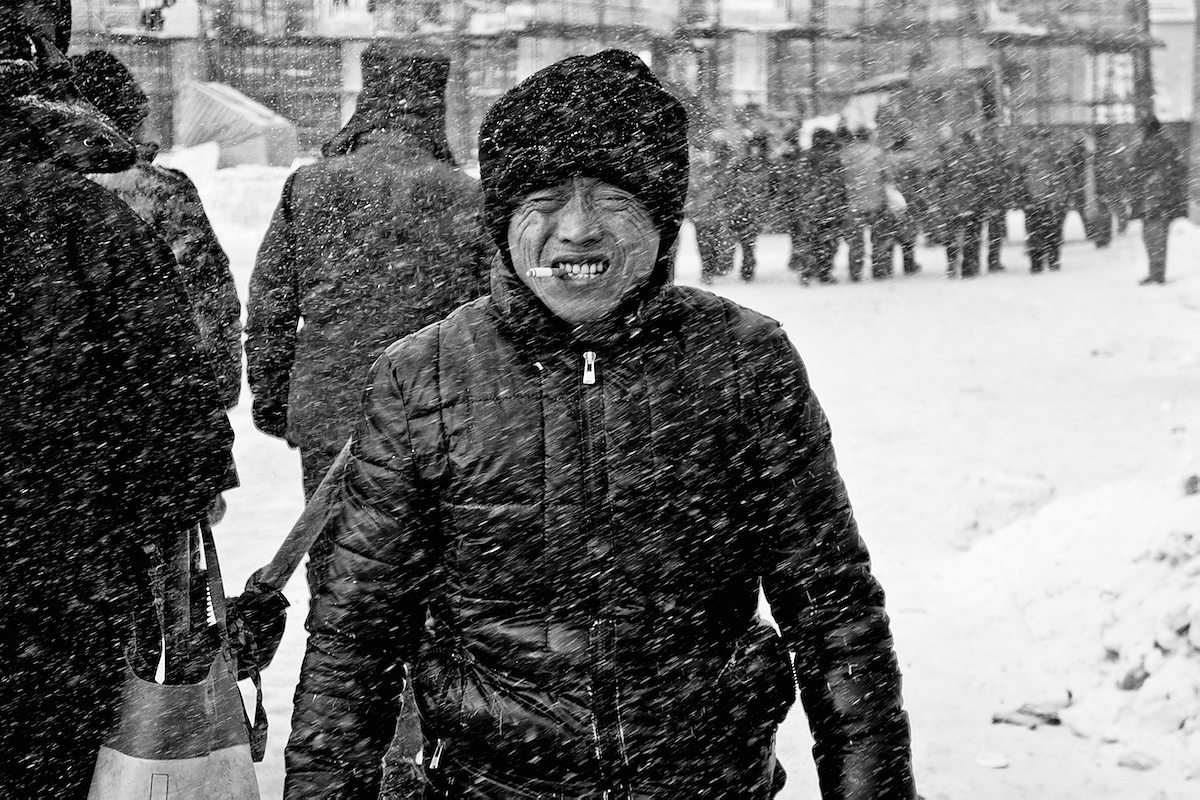
Most people in China, they’re still in what I call “survival mode”
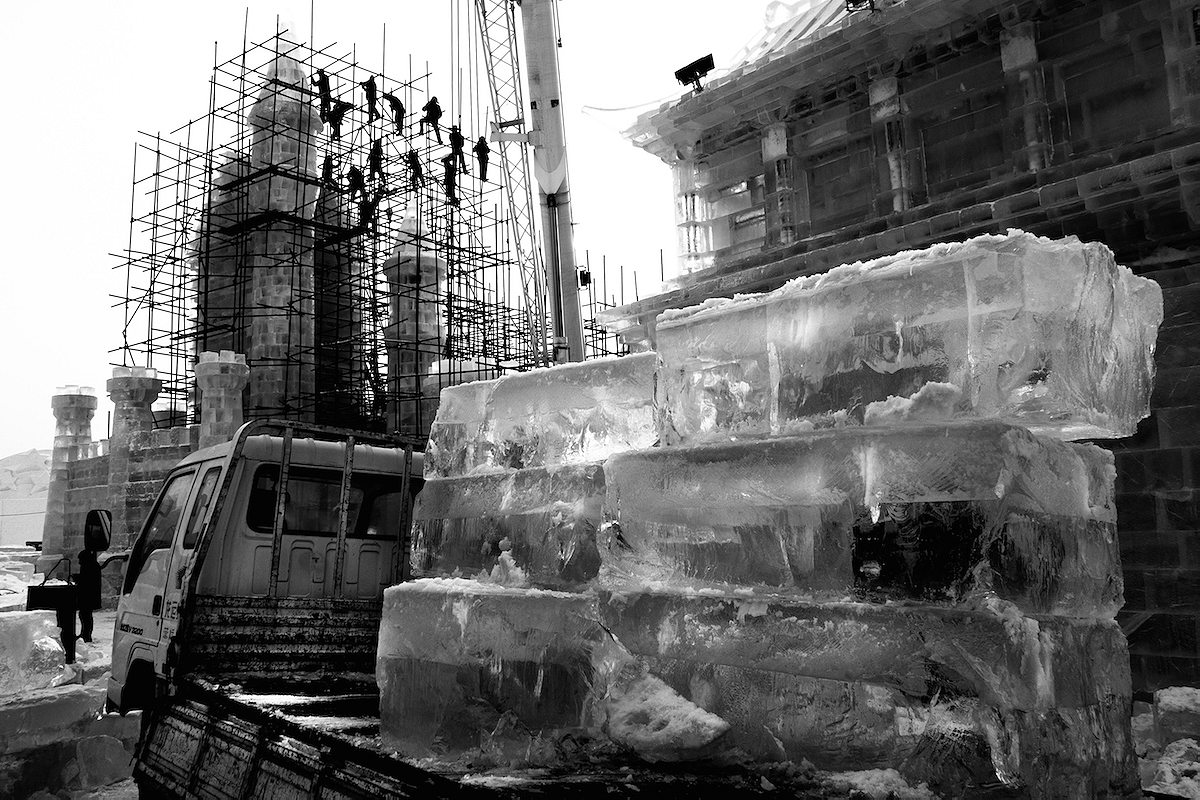
Roads & Kingdoms: So these people are building hotels and skyscrapers in the summer and huge ice sculptures in the winter?
Wong: Exactly. In fact, one of my wife’s uncles owns a construction business and he said most of the time, it’s too cold for these guys to work in the winter time because of the height of the buildings. So construction just totally stops. A lot of workers are left out in the cold, it’s not like they get union benefits or anything like that.
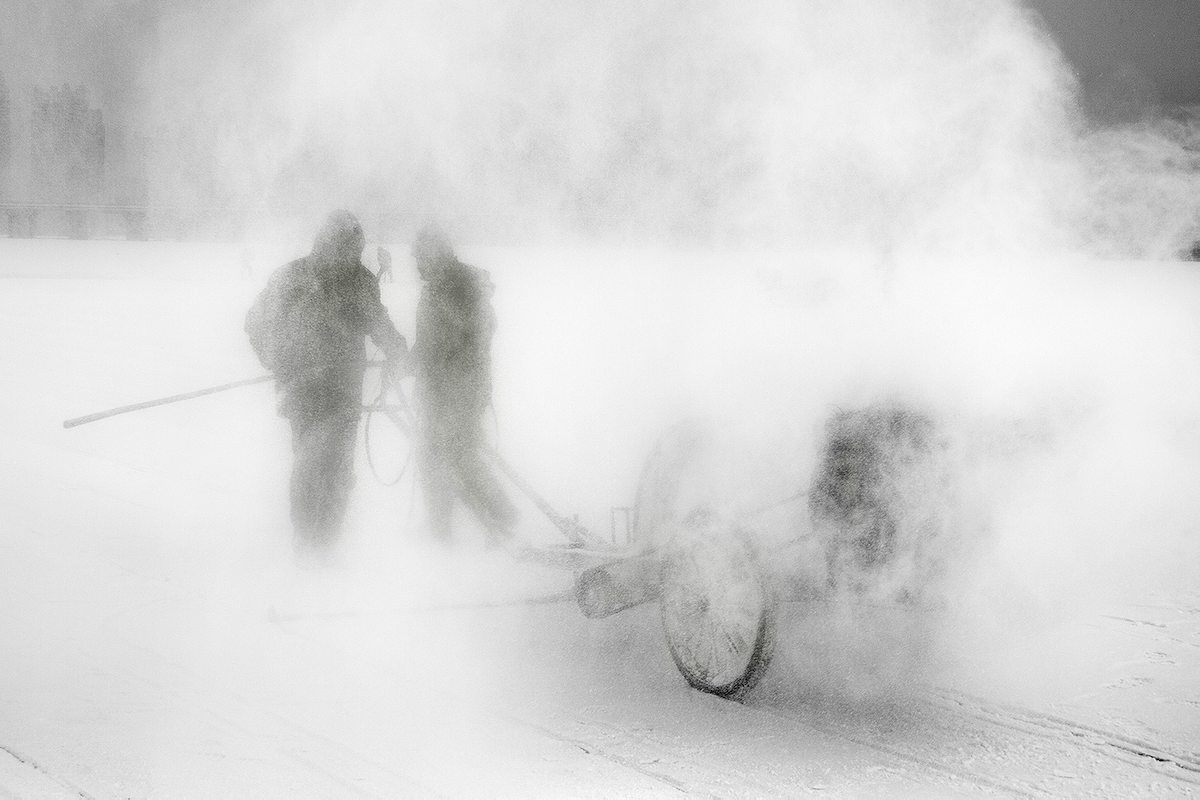
Roads & Kingdoms: So to an outsider this might look like an insane tourist attraction, but it’s actually how some of these workers survive…
Wong: Yes, exactly. I mean that’s the interesting thing about China. You don’t see a lot of people on their pity pot. I’m not a big fan of this country by any means, even after living here and the fact that it’s given me a wife and a beautiful daughter. But one thing I have to say about the people is that they don’t gripe about work. Most people, they’re still in what I would call “survival mode.” That’s the thing that people don’t understand about China – everybody is still in the mindset of “we don’t know how long this is going to last, so we got to get it while it’s still there.”
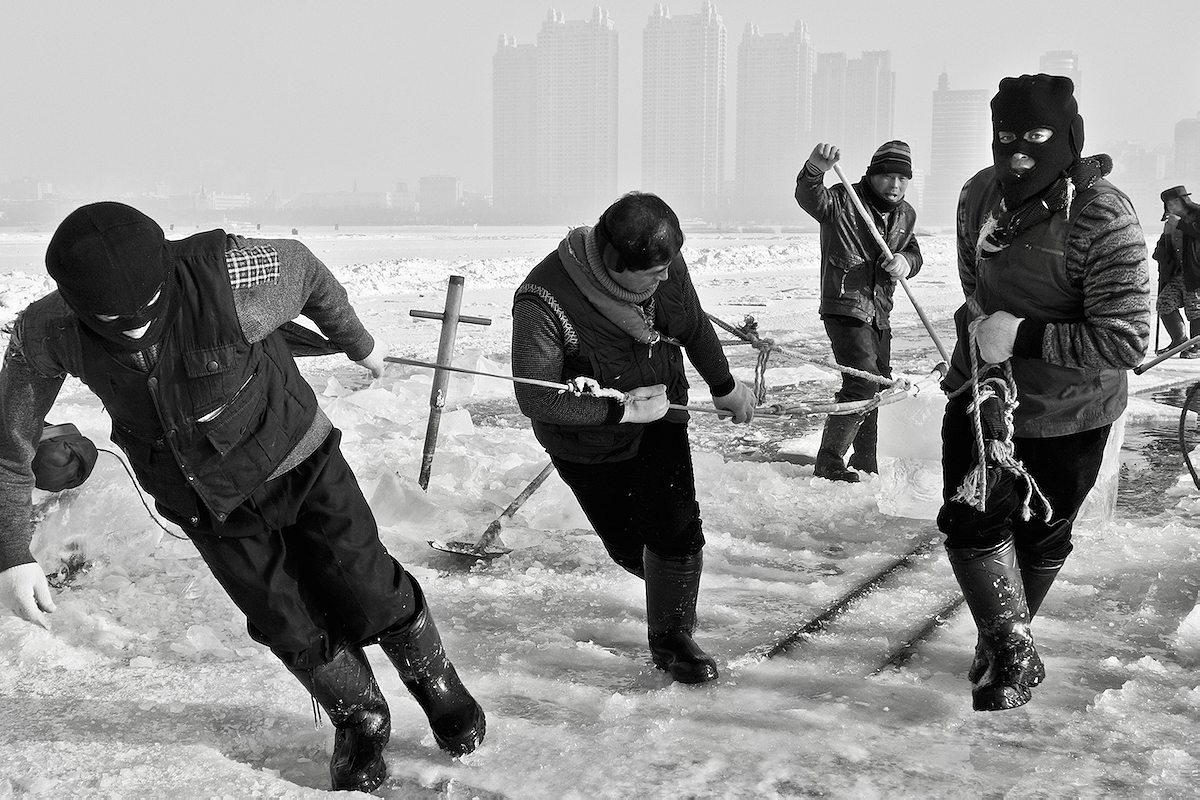
The interesting thing about China is that things are always on the surface

Roads & Kingdoms: What does the festival actually look like when it’s finished?
Wong: Well it’s pretty surreal. When I walked around it for the first time, my mouth just kind of dropped. You just see these buildings and these sculptures and these mini-castles everywhere, it’s all ice. Some of them are 50 meters high. The silence of it all, it’s so beautiful, I just kind of felt like I was walking on another planet.
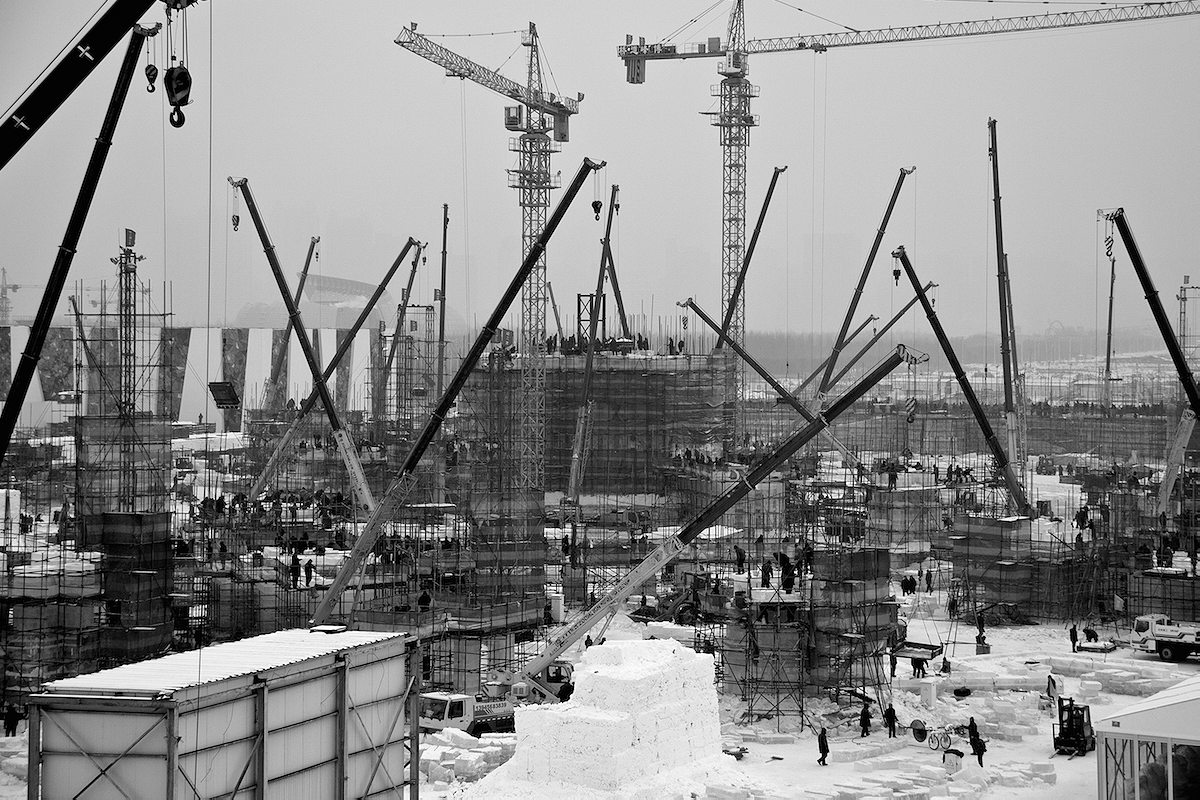
Roads & Kingdoms: Can you actually go inside the castles and buildings?
Wong: Yes, you can. But the interesting thing about China is that things are always on the surface. I was expecting more for the inside. But the construction is really what I wanted to emphasize. The whole process and the conditions were crazy. There were bulldozers and heavy duty machinery and everything. The Chinese are not great drivers to begin with, so you can imagine guys on forklifts just coming out of everywhere and people yelling and screaming and it was like that non-stop. It was exciting to be around, particularly seeing the guys with the saws cutting the ice.
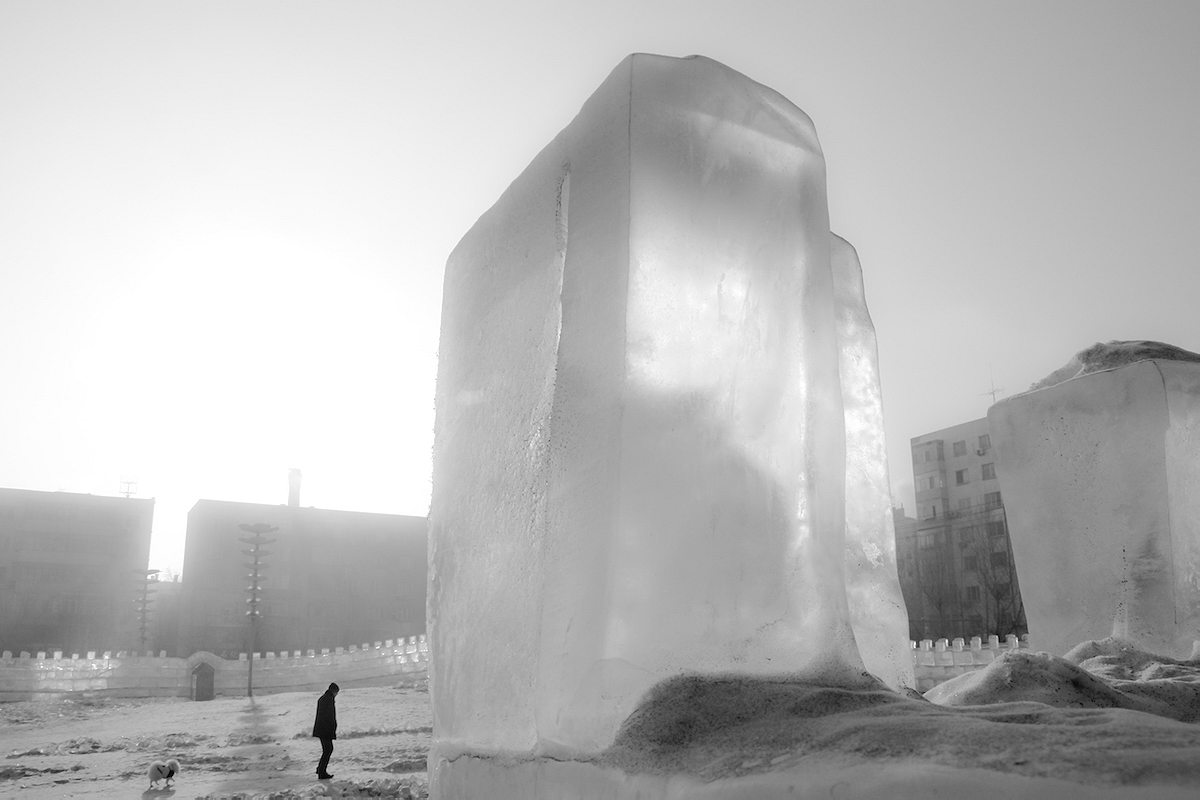
Roads & Kingdoms: Surely it must take special skills to work with ice?
Wong: Definitely. There were different levels of workers, the pay ranged from a couple hundred renminbi a day, which is the equivalent to about 30 dollars – and those are the grunts. Then you have the next level, the guys who can cut ice and move it, and then you have the guys who do the actual sculpture work. So I found out that some of the guys could actually get paid 2,000 renminbi a day, which I was actually surprised by. But those are the guys that have been around and also they do the most dangerous work.
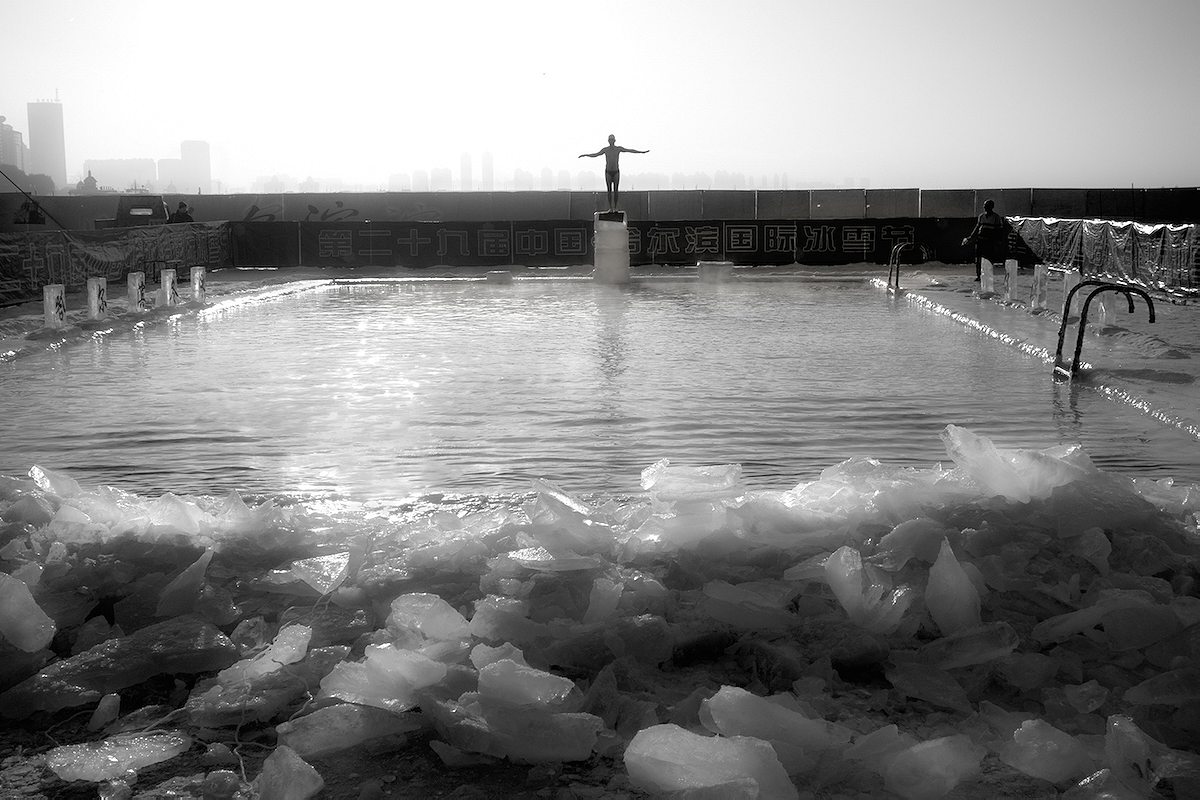
I’m sure thousands of people drive by every day and never even give it a second thought
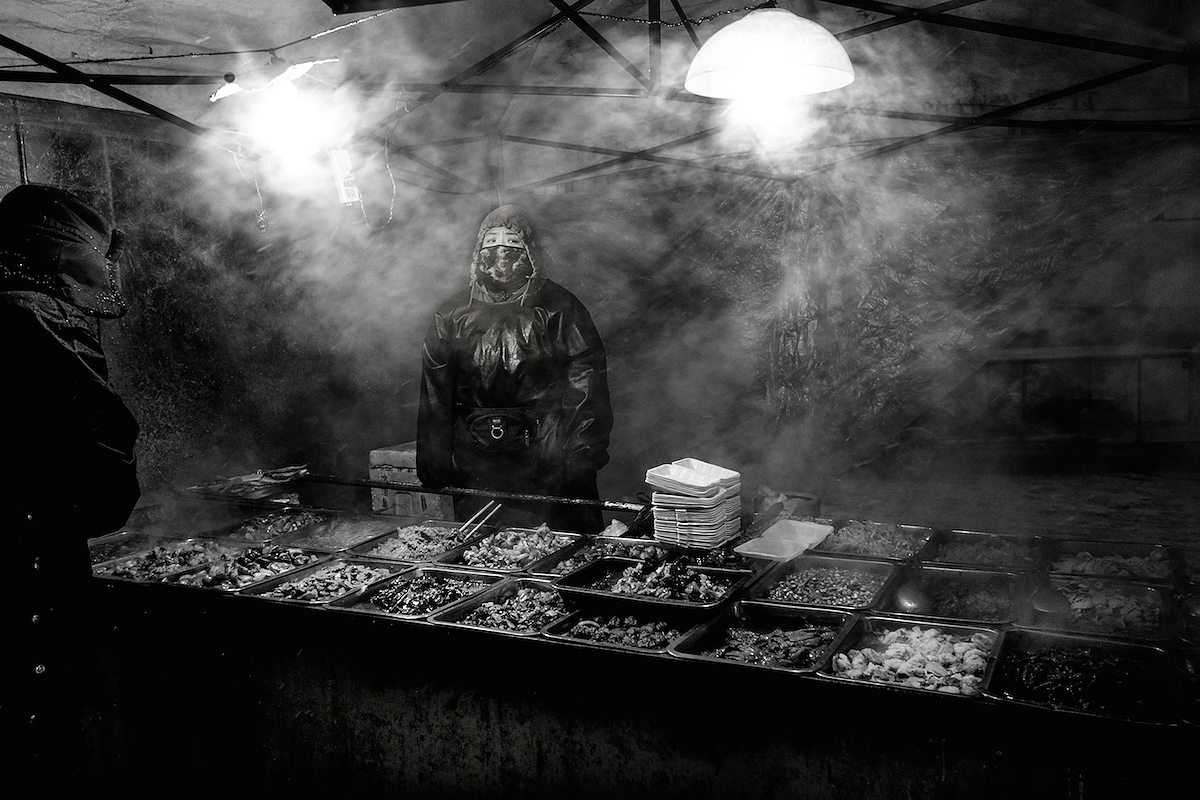
Roads & Kingdoms: Yes, because it must not all be very safe…
Wong: No. China’s like that anyway, that’s why construction goes up so fast. They don’t have inspectors walking around. When I asked the PR people if there had ever been any accidents or deaths they of course said no. But the year before, they were hesitant about letting me walk around because I heard a block of ice landed on someone and killed them. Some workers wear hard hats though, that’s why you see on some of the photos their hats are really huge, because underneath these warm things they wear hard hats, and it makes them look like aliens.

Roads & Kingdoms: It’s true that when you first see these photos you don’t know what is going on or who these people are…
Wong: Yes, that’s what I like. I like otherworldly stuff. My philosophy about photography, particularly when it comes to documentary work, is you don’t have to go to Tibet to make great pictures. Everybody thinks that in China you have to go to Tibet or you have to go to Africa, etc, but I think there’s always interesting stuff all around. This ice worker project proves that. This kind of construction site, I’m sure thousands of people drive by every day and never even give it a second thought. But once I was there, seeing the guys pulling ice from the river, it was a trip. I was blown away.
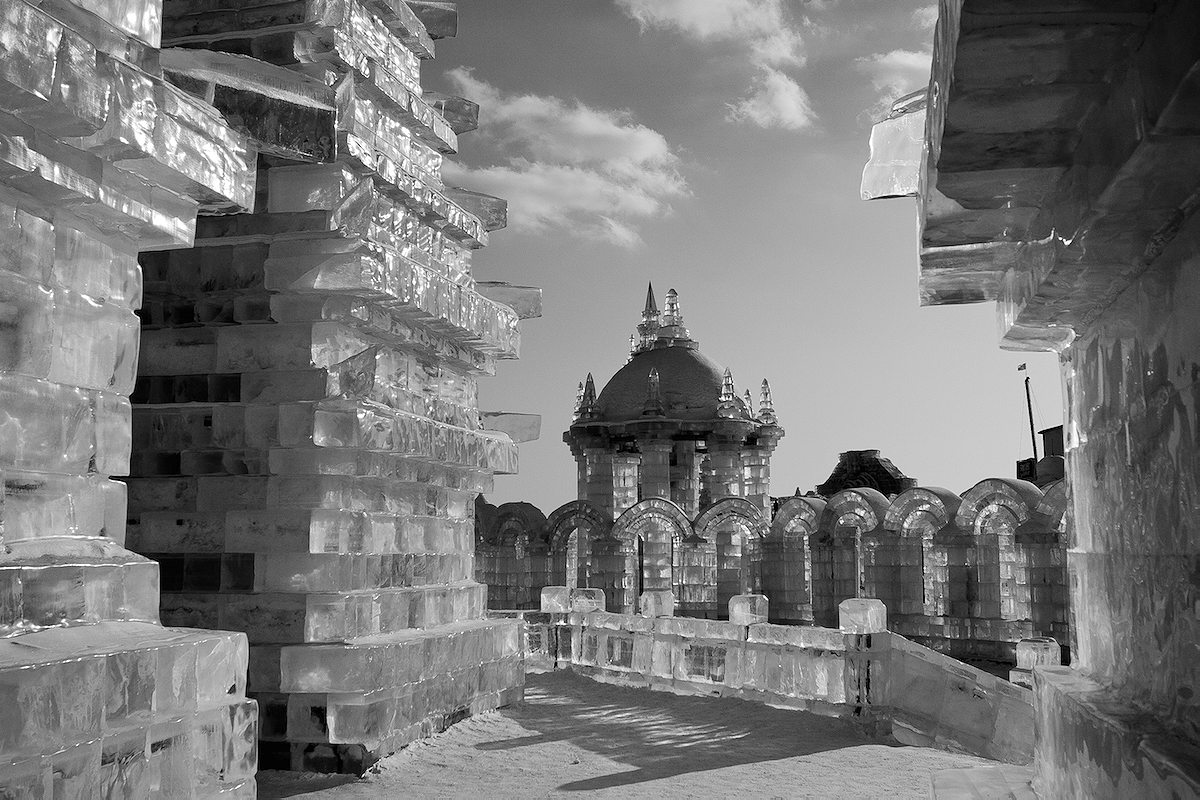
Roads & Kingdoms: So throughout the years, you always stayed focused on the construction stage?
Wong: Yes, I wanted to see what it took from the ground up, from when the place is totally empty. Every year I tried to plan in right. But even though it’s organized by the city, they’ve got about seven or eight construction teams that they coordinate, so it’s always hard to figure out when exactly they will start. No one ever gives me a date. This year, I thought I’d planned it perfectly, but I got there and I didn’t see any finished buildings. The PR person said they had just started the day before. What’s happening is that year by year, the river is freezing later and later. So I asked: “is the deadline going to be the same?” She said: “oh yes. We’re not going to change the deadline.” I just looked at her and she kind of smiled and said: “yeah it’s crazy.” They had three weeks and it was amazing to watch the landscape change so fast. I would walk through areas one day and the next, I wouldn’t even recognize it. They definitely finished on time.
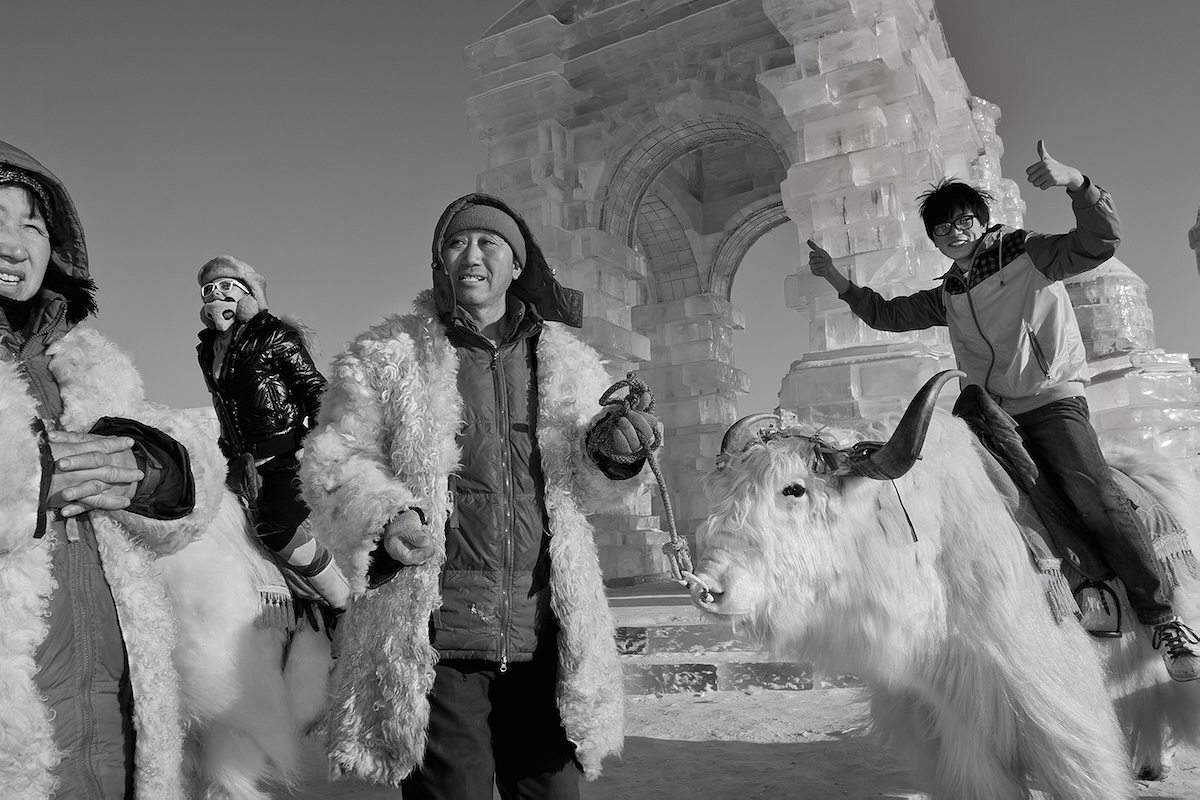
Top image: a worker in the early stages of carving out what will become a gigantic Buddha statue made solely out of snow.
To see more of Wesley Thomas Wong’s work, visit his website.